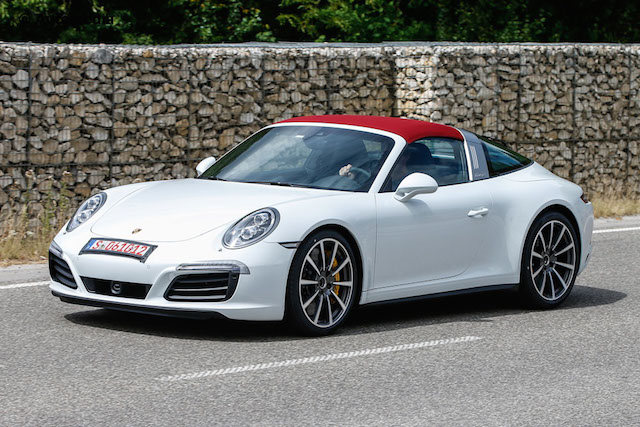
Porsche 911 The German company has been testing its facelifted 911 range, comprising the coupe, Targa (above), convertible, and turbo – but there is very little visual evidence of an actual ‘facelift.’ The revamp is aimed more at improving air inlets and outlets for aerodynamic and thermal efficiency. Why? To get the best out of a new generation of turbocharged engines. The major change is a new boosted flat six-cylinder engine which will replace the traditional naturally aspirated six-cylinder boxer unit. The new standard engine in the coupe, Targa, and convertible will have a capacity of 3.0-litres and deliver 275kW. Go-faster ‘S’ models will get a 3.5-litre version generating around 310kW. The 911 Turbo will get the thermal revisions, too, but is expected to continue to use the twin-turbocharged 3.8-litre flat-six, good for 388kW in the standard car and 417kW in the ‘S’ version. The new 911 range will also get a new steering wheel, the same as the one in the 918 Spyder. The PCM touchscreen interface is likely to be be upgraded.  Audi R8 Spyder The soft-top (above) will use the same 5.2-litre V10 engine as the coupe when the production version breaks cover next year. The V10 delivers 397kW and 540Nm and can catapault the coupe to 100km/h in 3.5 seconds. The more powerful engine in the R8 ‘Plus’ generates 455kW and a 0-100km/h time of 3.2 seconds. The Spyder gets the same engine options but the extra weight of its soft-top components will blunt sprint times and top speed.
Audi R8 Spyder The soft-top (above) will use the same 5.2-litre V10 engine as the coupe when the production version breaks cover next year. The V10 delivers 397kW and 540Nm and can catapault the coupe to 100km/h in 3.5 seconds. The more powerful engine in the R8 ‘Plus’ generates 455kW and a 0-100km/h time of 3.2 seconds. The Spyder gets the same engine options but the extra weight of its soft-top components will blunt sprint times and top speed.  Jaguar F-Type RS The British brand’s new high-performance drop-top (above) is pictured here leaving its base at the Nurburgring. This RS is the halo F-Type and uses a generic cialis
Jaguar F-Type RS The British brand’s new high-performance drop-top (above) is pictured here leaving its base at the Nurburgring. This RS is the halo F-Type and uses a generic cialis


